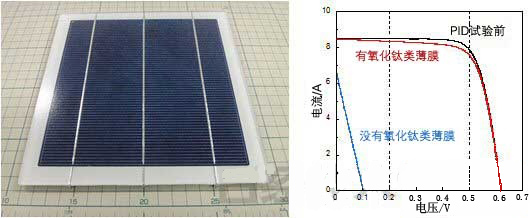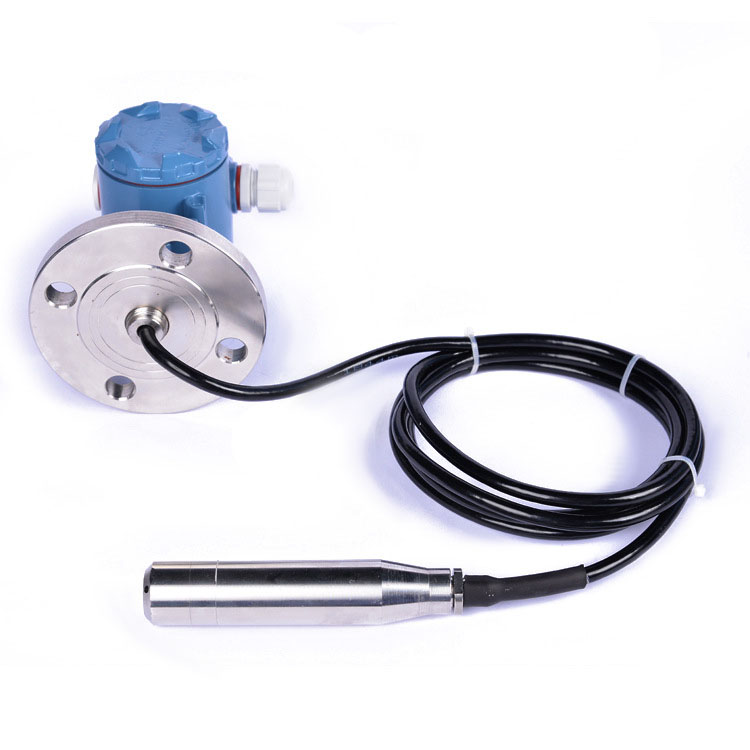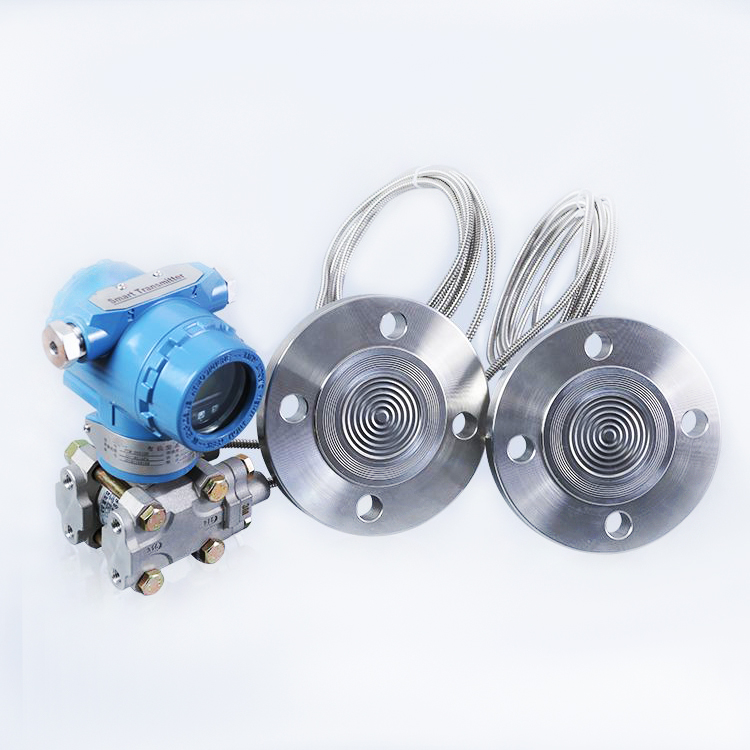The Japan Industrial Technology Research Institute and Sustainable Titania Technology have jointly developed techniques that can suppress the phenomenon of potential induced depression (PID). This phenomenon will reduce the output power of solar cell modules. According to reports, this new technology can be realized by a simple method of coating low-cost materials on glass substrates. Therefore, it is a technology that is expected to solve the PID problem.

Cross section structure of module (right) and common module (left) to which this technology is applied

Trial module appearance and PID test results
The technology developed this time is applied to a glass substrate constituting a solar cell module, coated with a TiO 2 (titanium oxide) based composite metal compound thin film, dried, and then heat-treated at a temperature of 200 to 450° C. for 15 minutes. In the coating operation, a "Doctor Blade method" is employed in which a solution containing a raw material is dropped and then diluted on a whole substrate by a metal prop, a metal rod, and the like.
Using the technology developed this time in a solar module with an external size of 18cm×18cm, and performing a PID test (-1000V, 85°C, 2 hours), it was found that the reduction in conversion efficiency before and after the test was small. For ordinary modules, the conversion efficiency before and after the test will be significantly reduced from 15.9% to 0.6%. The main reason for the PID phenomenon is estimated - the diffusion of sodium ions in the glass is blocked by the film.
In the future, the material, film thickness, and film formation conditions of the thin film will be optimized to further improve the inhibitory effect of the PID phenomenon. At the same time, the principle of suppression of PID phenomena will also be explored, and large-area modules will be used for testing.
The details will be announced at the “Production Research Institute Photovoltaic Power Generation Engineering Research Center Results Report 2013†​​conference held at the Tsukuba International Conference Center from June 4 to June 5, 2013.
The liquid level transmitter can convert the changes of various level parameters into analog signals, and transmit them to the control room remotely for centralized display, alarm or automatic control of secondary instruments or computers. Its good structure and installation method can be applied to the continuous detection of liquid level, material level or material level under special conditions such as high temperature, high pressure, strong corrosion, easy crystallization, anti-clogging, anti-cold junction, and solid powdery and granular materials. , can be widely used in detection and control in various industrial processes.
Liquid level transmitters can be applied to liquid Level Measurement and control in industrial sites, rural water supply and sewage treatment, petroleum, chemical industry, power plants, hydrological monitoring, reservoirs, dams, hydropower construction and other fields of liquid level measurement and control. Liquid level transmitters have input type, straight rod type, flange type, threaded type, inductive type, screw-in type, floating ball structure design, with anti-blocking type design, simple device, convenient use and strong interchangeability , The high-quality sensor has high sensitivity and fast response speed, accurately reflects the slight changes in the flow or static liquid level, and has high measurement accuracy.
Advantages of Level Transmitters
1. The device is simple, easy to use, and has strong interchangeability.
2. It is suitable for measuring the liquid level and interface of the liquid medium in the container. In addition to on-site instructions, it can also be equipped with remote transmitters, alarm switches, and complete detection functions.
3. The reading is intuitive and eye-catching, and the direction of the observation indicator can be changed according to the user's needs.
4. The measurement range is large, not limited by the height of the storage tank.
5. The indicating mechanism is completely isolated from the measured medium, with good sealing performance, high reliability and safe use.
6. Simple structure, convenient installation, convenient maintenance, corrosion resistance, no power supply, explosion-proof.
7. The high-quality sensor has high sensitivity and fast response speed, accurately reflects the slight changes of flowing or static liquid level, and has high measurement accuracy.
8. With intrinsically safe explosion-proof and isolated explosion-proof capabilities, it can be used in various dangerous places.
9. With anti-blocking design, it can realize the measurement of the liquid level of paste medium.
10.100% equal division scale, LED/LCD indicator head, very convenient to read on site.
11.4~20mA two-wire signal transmission, strong anti-interference ability and long transmission distance.
12. Exquisite and unique zero point, full scale, and nonlinear compensation ensure the accuracy and stability of the instrument within the range of operating conditions.
13. The Pressure Sensor directly senses the liquid level pressure and is not affected by the foaming and accumulation of the medium.
14. Wide range of tested media can be used, such as oil, water and paste, with certain anti-corrosion ability.
Classification of liquid level transmitters
1. Single flange liquid level transmitter
Single-flange liquid level transmitters have flat flanges and flange liquid level transmitters with insert barrels, both of which are suitable for single-flange liquid level transmitters that use the gravity of the medium to be measured to measure the height of the liquid level. For medium with high viscosity and easy crystallization, it is generally used in open containers or equipment installations.

2. Double flange liquid level transmitter
The double-flange liquid level transmitter is a Differential Pressure Transmitter, which provides a reliable measurement method to prevent the measured medium from directly contacting the isolation diaphragm of the transmitter. The main features are the need to isolate the high-temperature medium from the transmitter, the measurement medium has a corrosive effect on the sensitive components of the transmitter, the suspension liquid or high-viscosity medium, the measured medium solidifies or crystallizes due to changes in the environment or process temperature, and the measured medium is replaced It needs to be strictly purified to measure the first class. Double flange liquid level transmitter is mainly used in the measurement of liquid level in sealed pressure vessels.

3. Submersible liquid level transmitter
The submersible liquid level transmitter has rod type and arm type. Its principle is based on the principle that the measured liquid static pressure is proportional to the height of the liquid. It uses the piezoresistive effect of diffused silicon or ceramic sensitive elements to convert the static pressure into electricity. Signal. After temperature compensation and linear correction, it is converted into 4~20mA current signal output. Due to the characteristics of this transmitter, such as convenient installation, strong adaptability, etc., it can perform high-precision measurement from water, oil to paste with high viscosity, and is not affected by the foaming and accumulation of the measured medium. It is generally used in open Devices for mouthpieces or equipment.

Level Transmitter,Differential Pressure Level Transmitter,Submersible Level Transmitter,Level Gauge
Wuxi Winsun Automation Instrument Co., Ltd , https://www.winsunwx.com